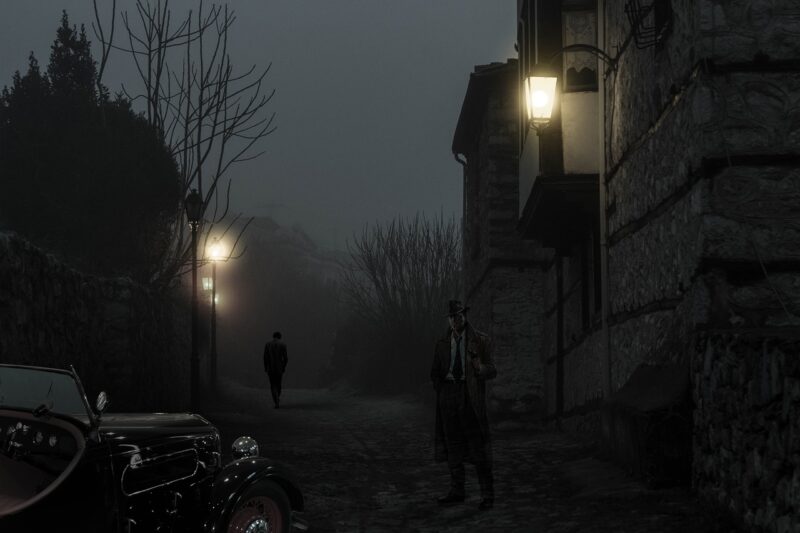The Mafia’s Profits from the Prohibition Era and How It Shaped Organized Crime
November 15, 2024

The Prohibition Era, which spanned from 1920 to 1933, was a time of significant social upheaval and change in the United States. When the 18th Amendment was enacted, outlawing the manufacture, sale, and transportation of intoxicating liquors, it fundamentally altered the landscape of American society. While the intent was to curb alcohol consumption and improve public morals, it instead gave rise to a flourishing underground economy, with organized crime syndicates, particularly the Mafia, reaping enormous profits.
1. The Rise of the Mafia during Prohibition
In the wake of Prohibition, the Mafia capitalized on the public’s desire for illicit alcohol. Speakeasies—secret bars that served alcohol—sprang up in cities across the nation, and organized crime groups took control of these establishments. This led to a surge in profits as the demand for alcohol soared. One of the most notable figures during this time was Al Capone, who became synonymous with the Prohibition era’s organized crime.
Capone, who ran a vast network of breweries and speakeasies, is estimated to have made millions annually from illegal alcohol sales. The profits from these operations allowed the Mafia to expand their control and influence, establishing a stronghold in major cities like Chicago, New York, and Detroit.
2. The Economics of Illicit Operations
The profitability of illegal alcohol was astronomical. With alcohol now a forbidden product, prices skyrocketed. A bottle of liquor that typically sold for a few dollars could fetch hundreds of dollars in a speakeasy. The profit margins were immense, incentivizing the Mafia to innovate and outmaneuver law enforcement.
Organized crime groups invested in corrupting law enforcement officials and politicians, ensuring they could operate with relative impunity. Bribery became commonplace, allowing these organizations to maintain their illegal operations without interference. The foundation was laid for a culture of corruption that would last for decades, solidifying the Mafia’s grip on power.
3. The Role of Violence in the Trade
The fierce competition among rival gangs for control over lucrative territory brought about a wave of violence. Territory battles often resulted in bloodshed, illustrated by infamous events like the Saint Valentine’s Day Massacre of 1929, where seven members of a rival gang were gunned down in a brutal power struggle.
Violence was not merely a byproduct of competition; it was also a tool for the Mafia to instill fear within communities and ensure compliance. Potential rivals or betrayers faced severe consequences, perpetuating a cycle of intimidation that discouraged law enforcement interference and dissuaded new competitors.
4. Diversification into Other Criminal Enterprises
The financial windfall from Prohibition allowed the Mafia to diversify its operations into various illegal enterprises. They began exploiting other illicit opportunities such as gambling, loan sharking, and even prostitution. As these operations flourished alongside illegal alcohol sales, the Mafia established itself as an all-encompassing criminal organization.
This diversification was strategic. The steady streams of income from these various activities provided a safety net, reducing the Mafia’s reliance on any single revenue source. It also increased their influence and relevance in numerous aspects of everyday life, effectively ingraining themselves within communities and utilizing relationships to fortify their operations.
5. The End of Prohibition and the Mafia’s Continued Profits
The eventual repeal of Prohibition in 1933 might have appeared to signal the end of the Mafia’s lucrative alcohol business; however, it was merely a transition period. The skills and networks that Mafia organizations acquired during Prohibition allowed them to adapt and continue thriving. Many Mafia members who had built their empires on illegal alcohol quickly turned to legitimate businesses and new illicit opportunities, ensuring their wealth and influence persisted.
Moreover, with the repeal of Prohibition, organized crime shifted focus, creating a robust framework for drug trafficking, which would become a prevalent and lucrative area for Mafia operations in the decades that followed.
6. Consequences of Prohibition on Organized Crime
The consequences of Prohibition were far-reaching. It not only transformed American society and culture but also gave rise to organized crime, which is still a relevant concern today. The Mafia’s relationship with law enforcement, business, and politics was fundamentally altered during this time, creating a complex web of corruption that became ingrained in the American way of life.
The legacy of Prohibition continues to shape public policy debates about substance regulations. Today, factors such as the ongoing war on drugs can be traced back to the societal and legal dynamics established during the Prohibition Era, reflecting the unanticipated consequences of legislating morality.
Conclusion
In conclusion, the Mafia’s profits from the Prohibition Era were vast, transforming organized crime into a powerful and sophisticated network that continues to influence modern society. Though the era has ended, its ramifications remain evident in the ongoing struggle against organized crime and the influence it exerts on both legitimate and illegitimate sectors.
Understanding the history of the Mafia during this crucial period allows us to grasp the complexities of organized crime today. It is a stark reminder of how societal attempts to legislate morality can inadvertently fuel criminal enterprise, leading to unforeseen consequences that echo through the halls of history and into the present.






